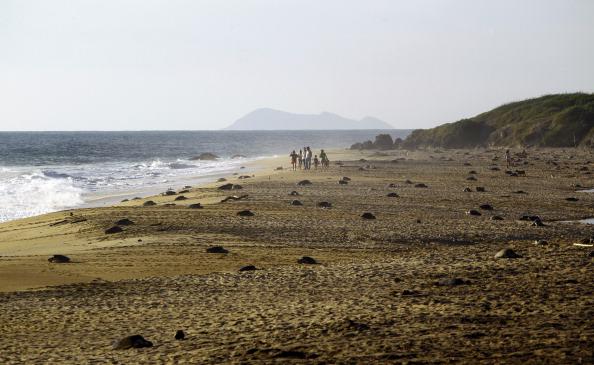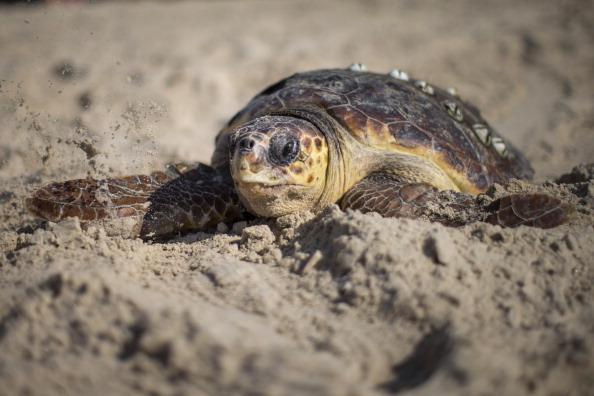Sea turtles and tourism are thriving at Cape Hatteras National Seashore!
Since the National Park Service put a new beach driving rule in place in 2012, sea turtles have made a record number of nests and both the number of visitors to the seashore and dollars spent on lodging during the summer nesting season have increased.
Protecting the areas where sea turtles nest has yielded some amazing rewards. As Defenders’ own Jason Rylander said in a recent Public News Service story, “plenty of research backs up the fact that when you can limit the amount of disturbance in those areas at this critical times of the year, you will see a correlation to nesting success,” and that’s certainly been the case: there were 222 nests at Cape Hatteras in 2012 and 254 in 2013!
Tourism numbers were strong too. Last year nearly 1.2 million people visited Cape Hatteras National Seashore during the months of June, July and
It’s a big world out there, but sea turtle hatchlings like this one have a great start at Cape Hatteras National Seashore thanks to the beach driving rule.
August, and visitors spent well over $75 million on lodging during that time as well.
To highlight these successes, Defenders launched a print ad campaign in Outer Banks Magazine and IndyWeek, welcoming visitors and turtles alike back to the beach for the 2014 beach season. We’ve worked hard for nearly a decade along with other conservation groups to ensure that the National Park Service created effective driving protocols. And keeping the rule in place wasn’t always easy. When the rule was threatened by legislative attacks from off-road vehicle (ORV) interest groups last year, we took action with a radio ad calling out North Carolina’s senators to protect the rule and stand up for wildlife. This triggered voters to contact their senators to tell them to keep the ORV rules in place.
And while some predicted doom for Hatteras seashore tourism, the numbers show the rule creates a successful balance between enjoying the beach and protecting wildlife. Check it out at our Cape Hatteras page, where you can learn more from our infographic!
As we reach the second anniversary of the ORV rules in 2014, it’s looking like it’ll be another great summer at Cape Hatteras National Seashore.
This article was originally posted and published by Haley McKey, a contributing writers for www.defendersblog.org. Please click HERE for the original story and more information.




